Abstract
We evaluated the effectiveness of a dentist-implemented intervention in which brief escape from dental treatment was provided to manage disruptive child behavior during restorative dental treatment. Within a multiple baseline design across subjects, 4 children, aged 3 to 7 years, were provided temporary escape from dental treatment contingent upon brief periods of cooperative behavior. Disruptive behavior decreased when the appropriate escape contingency was used at least 80% of the time. The escape contingency required no more time than traditional management procedures (e.g., tell-show-do, reprimands and loud commands, restraint) to bring disruptive behavior under control. Independent ratings by two dentists provided social validation of the efficacy of the escape contingency.
Full text
PDF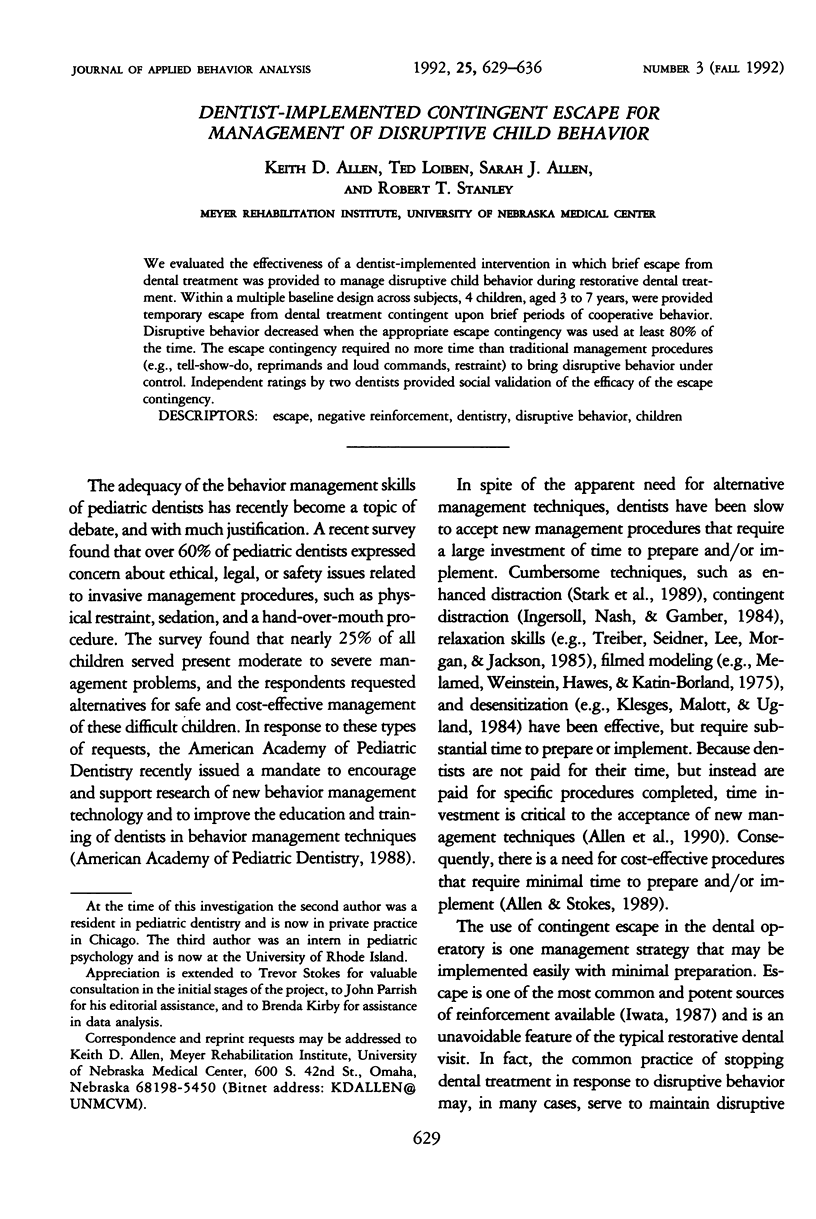
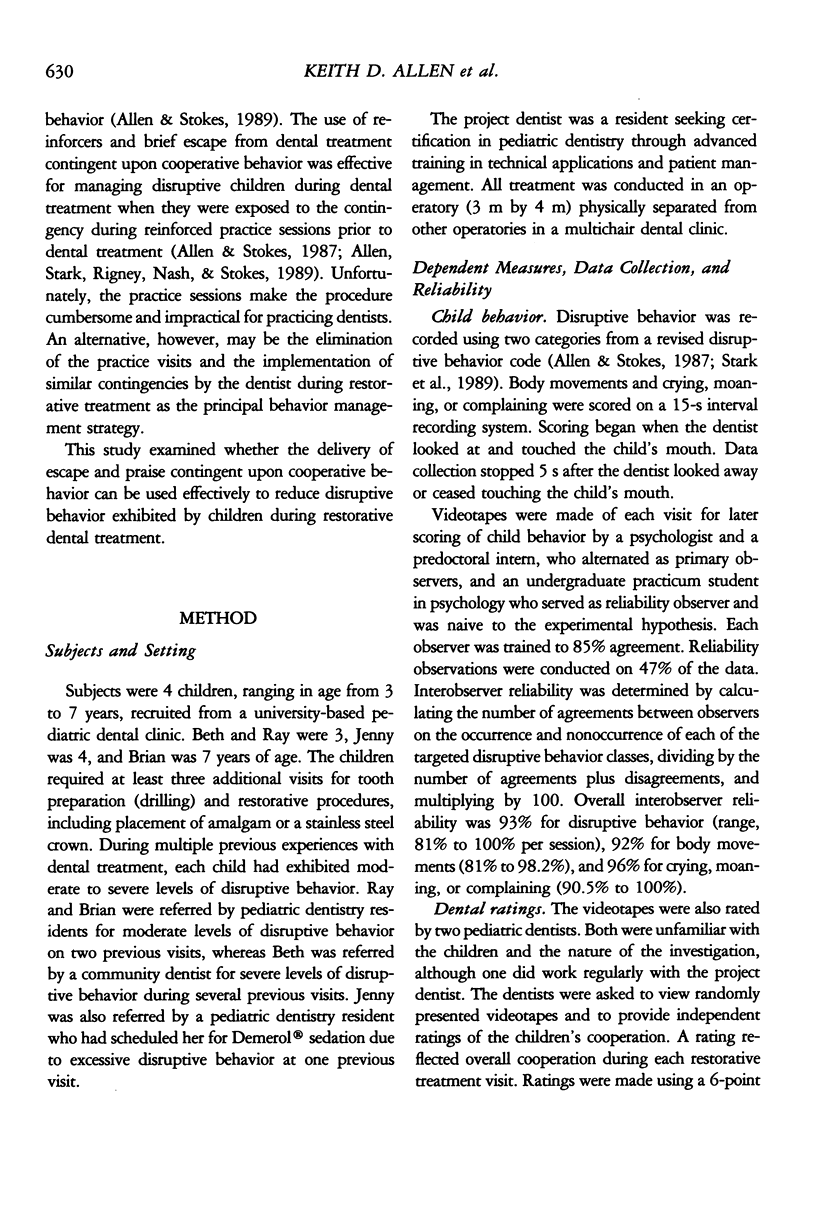
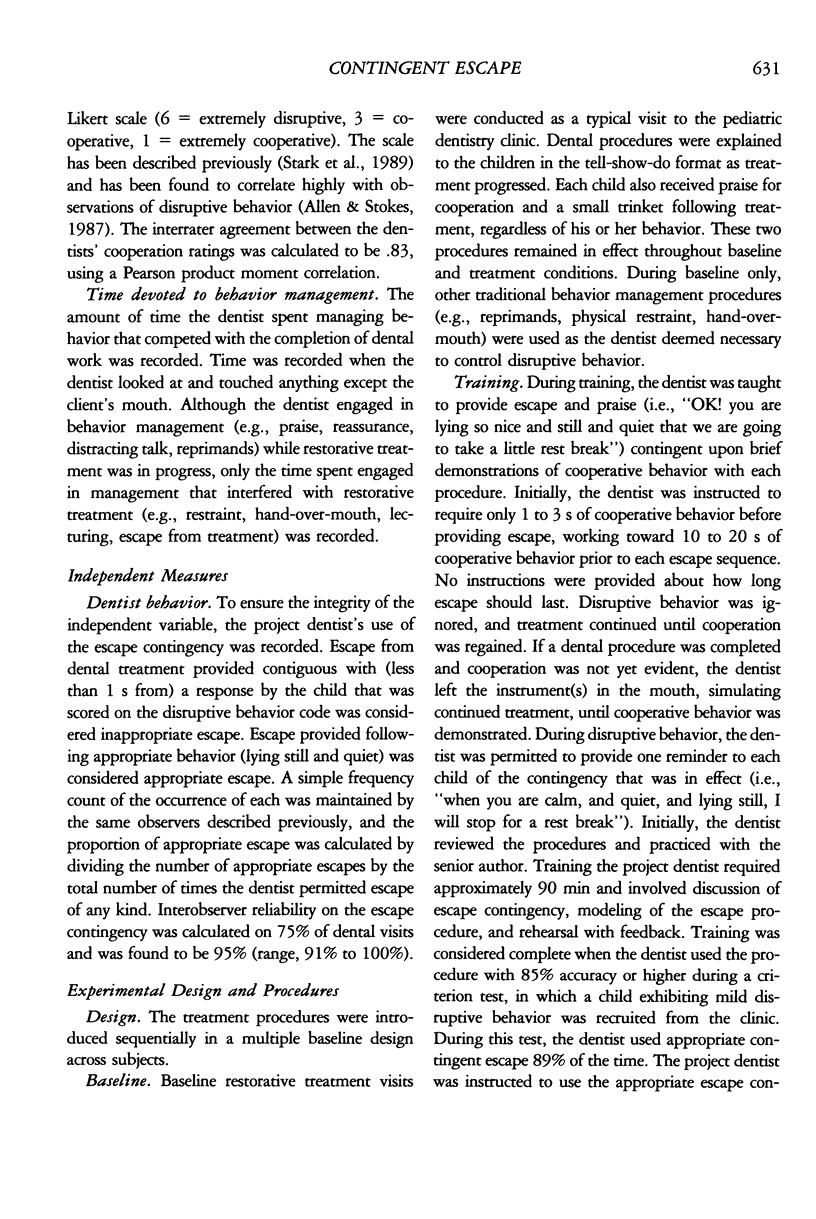
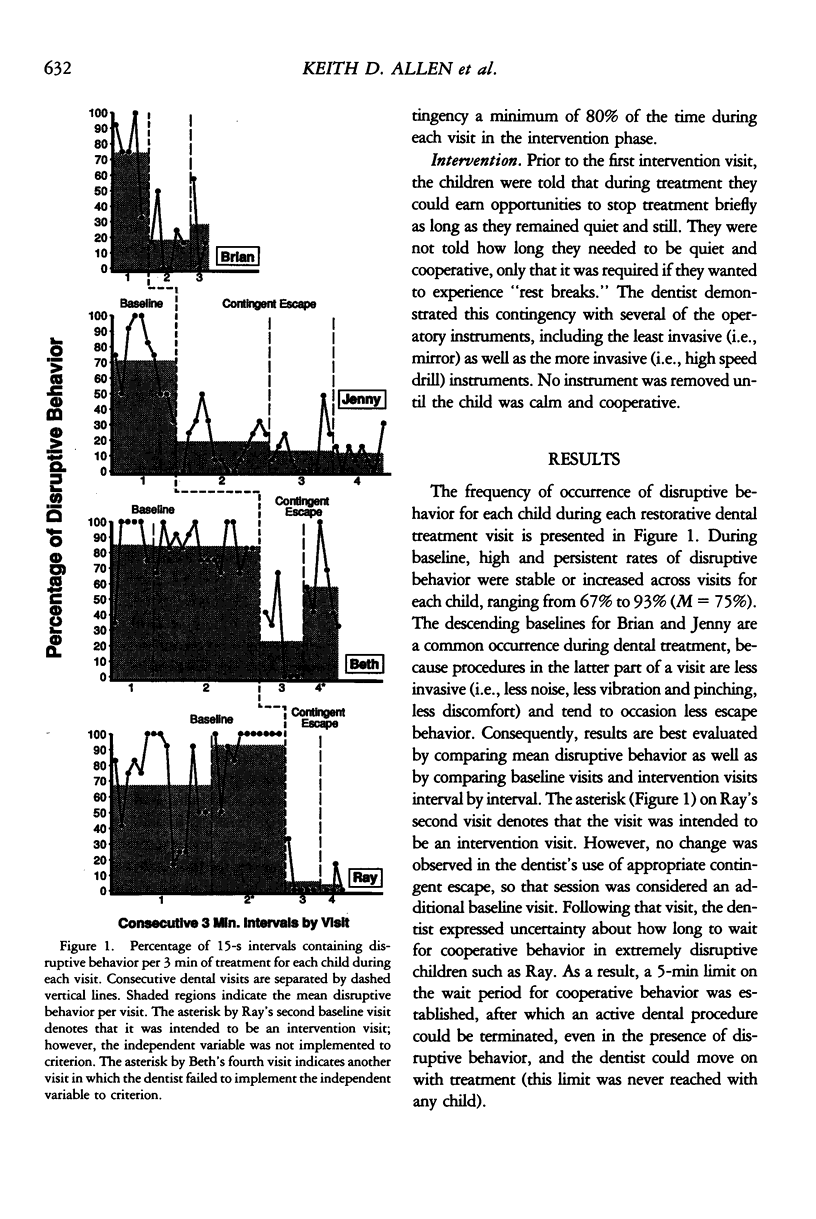
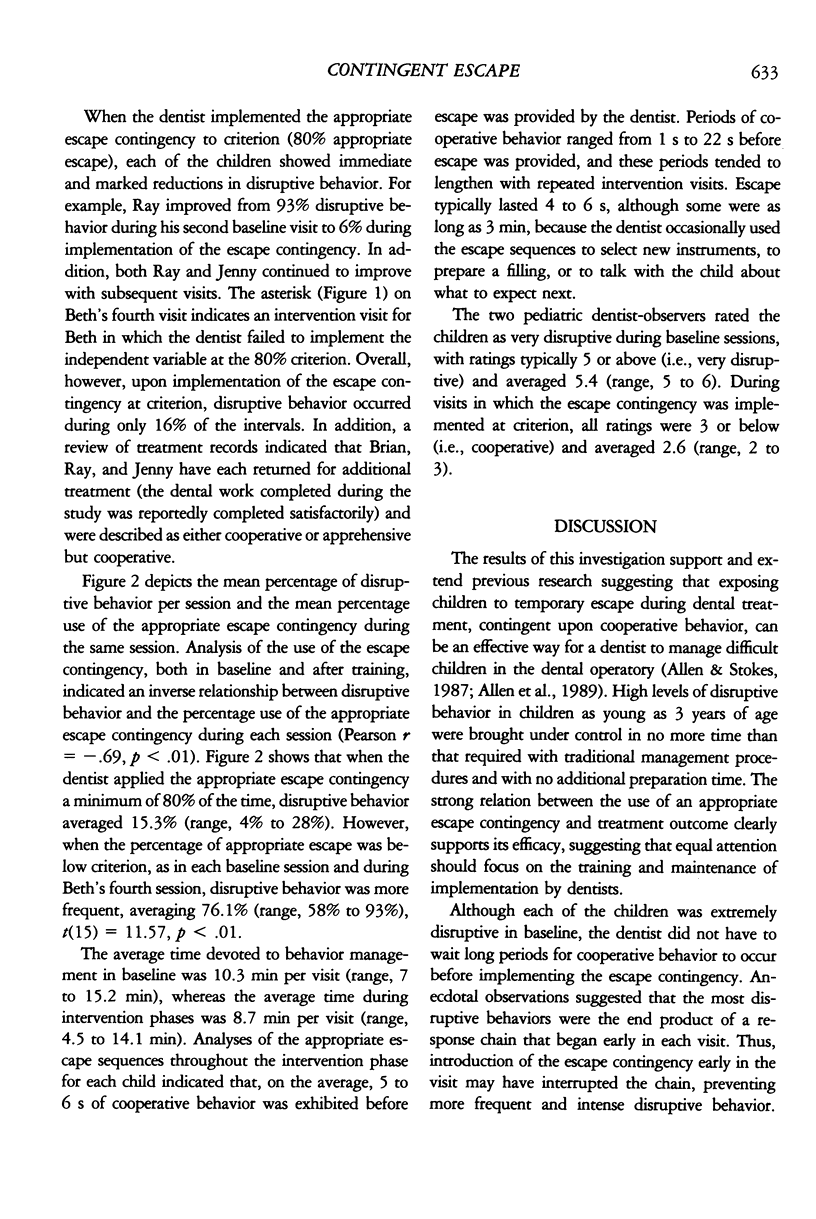
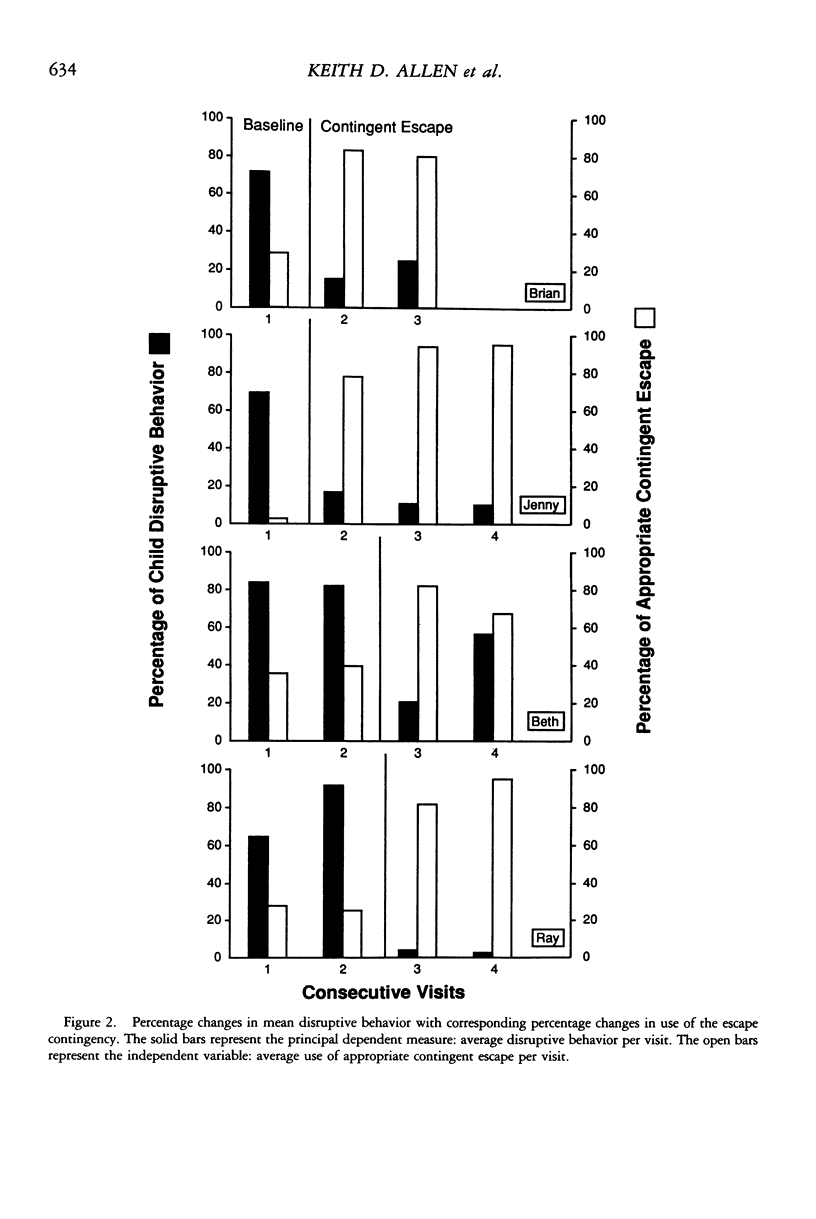
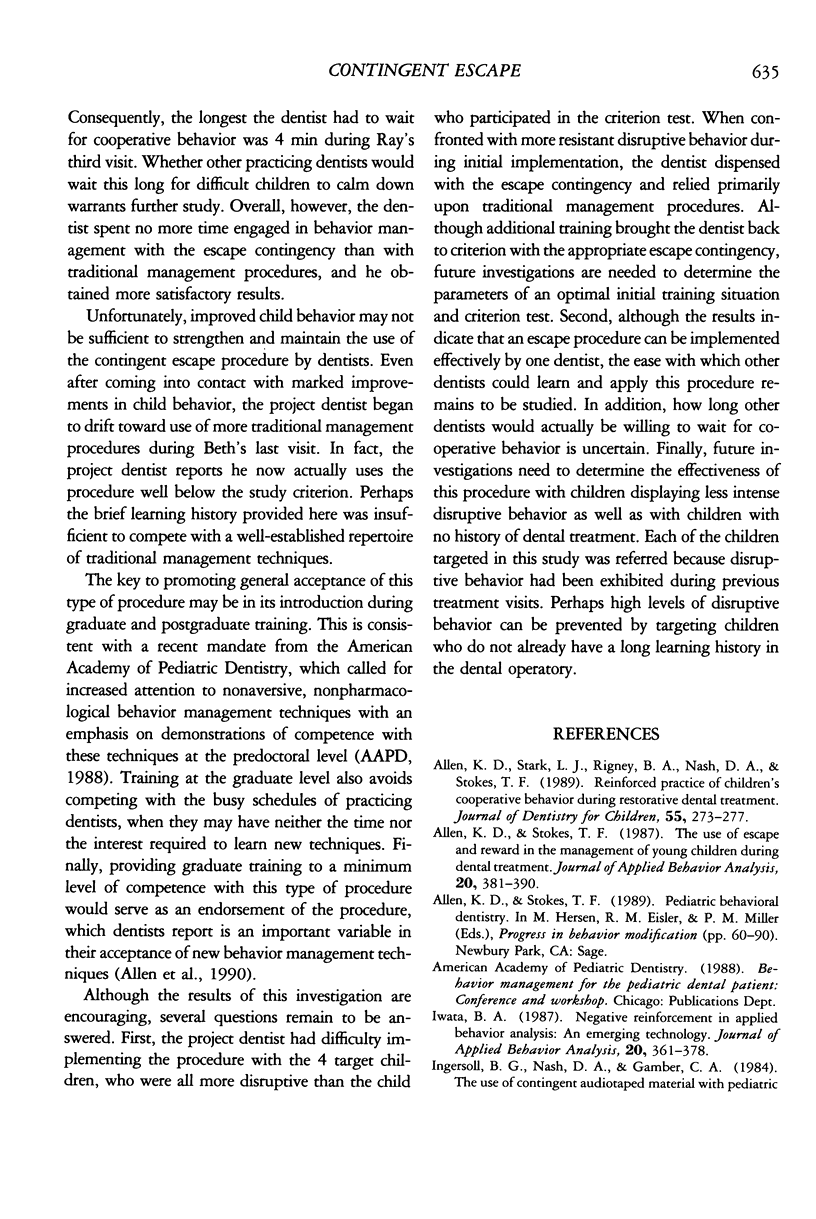

Selected References
These references are in PubMed. This may not be the complete list of references from this article.
- Allen K. D., Stark L. J., Rigney B. A., Nash D. A., Stokes T. F. Reinforced practice of children's cooperative behavior during restorative dental treatment. ASDC J Dent Child. 1988 Jul-Aug;55(4):273–277. [PubMed] [Google Scholar]
- Allen K. D., Stokes T. F. Use of escape and reward in the management of young children during dental treatment. J Appl Behav Anal. 1987 Winter;20(4):381–390. doi: 10.1901/jaba.1987.20-381. [DOI] [PMC free article] [PubMed] [Google Scholar]
- Ingersoll B. D., Nash D. A., Gamber C. The use of contingent audiotaped material with pediatric dental patients. J Am Dent Assoc. 1984 Nov;109(5):717–719. doi: 10.14219/jada.archive.1984.0170. [DOI] [PubMed] [Google Scholar]
- Iwata B. A. Negative reinforcement in applied behavior analysis: an emerging technology. J Appl Behav Anal. 1987 Winter;20(4):361–378. doi: 10.1901/jaba.1987.20-361. [DOI] [PMC free article] [PubMed] [Google Scholar]
- Klesges R. C., Malott J. M., Ugland M. The effects of graded exposure and parental modeling on the dental phobias of a four-year-old girl and her mother. J Behav Ther Exp Psychiatry. 1984 Jun;15(2):161–164. doi: 10.1016/0005-7916(84)90012-0. [DOI] [PubMed] [Google Scholar]
- Melamed B. G., Weinstein D., Katin-Borland M., Hawes R. Reduction of fear-related dental management problems with use of filmed modeling. J Am Dent Assoc. 1975 Apr;90(4):822–826. doi: 10.14219/jada.archive.1975.0151. [DOI] [PubMed] [Google Scholar]
- Stark L. J., Allen K. D., Hurst M., Nash D. A., Rigney B., Stokes T. F. Distraction: its utilization and efficacy with children undergoing dental treatment. J Appl Behav Anal. 1989 Fall;22(3):297–307. doi: 10.1901/jaba.1989.22-297. [DOI] [PMC free article] [PubMed] [Google Scholar]


